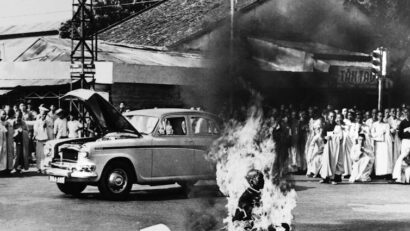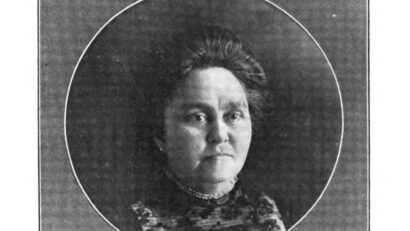
Kakapåkaka kaka
En ny klassiker kan man kalla det. Jag tog två kakor och slog ihop till en. I botten är det mördeg och ovanpå en havrekaka. Det blev en av mina favoritkakor. Lätta att göra är de också. Recept Ugnstemperatur 175 Läs mer…
Nyheter och länkar - en bra startsida helt enkelt |Oculus lyx vitae

En ny klassiker kan man kalla det. Jag tog två kakor och slog ihop till en. I botten är det mördeg och ovanpå en havrekaka. Det blev en av mina favoritkakor. Lätta att göra är de också. Recept Ugnstemperatur 175 Läs mer…

The legal implication of physically damaging the naira, Nigeria’s currency, came into focus recently with the prosecution of at least two celebrities by the country’s Economic and Financial Crimes Commission. Nigeria has a law that prohibits what it terms abuse, which also includes writing on the notes or crumpling them. It also covers naira coins. The law was introduced in 2007 but few Nigerians knew of its existence until now. Public law professor Abiodun Odusote explains why it doesn’t appear to have been effective.
Why is this law in the news?
Some celebrities ran into trouble with the law based on the way they had allegedly handled the Nigerian currency.
It is common to see Nigerians throw naira notes in the air, step on them or paste them on other people while dancing at parties and other social events, including traditional weddings. Throwing money in the air as the bride and her team come into the venue signifies love, affection and affluence.
Among those prosecuted was Idris Okuneye, a controversial celebrity also known as Bobrisky. Bobrisky was tried and handed a six-month prison sentence. Shortly after that, a socialite, Pascal Okechukwu, also known as Cubana Chief Priest, was arraigned. He pleaded not guilty and his trial is under way. An actress, Oluwadarasimi Omoseyin, was sentenced to six months’ imprisonment for spraying and stepping on naira notes.
What does the law say about abuse of the naira?
Sections 20 and 21 of the Central Bank of Nigeria Act became law in 2007. The law applies only to Nigeria’s currency, not to others.
The aim was to stem the abuse of naira notes and coins and improve the lifespan of the notes, thereby reducing the cost of replacement. The polymer notes – N50, N20, N10 and N5 – are designed to last for 18 to 24 months, but the higher denominations – N100, N200, N500, and N1,000 – are not available in polymer.
Naira notes are often dirty and mutilated, which is not the case with other global currency notes I have seen. I sometimes find it difficult to accept or touch some naira notes because of the extent of abuse that’s been inflicted on them.
The law prohibits various forms of abuse. This includes soiling, spraying, dancing on, stamping, writing on, mutilating, diminishing, engraving, piercing, squeezing, tearing or stapling them as well as any other form of defacement. It is a criminal offence to damage the currency in any way.
In my view the wording could also mean that rolling up naira notes and keeping them in your socks or underwear could fall foul of the law.
How many people have been convicted?
I don’t know the precise number of those who have been convicted of the abuse of naira notes. Some media outlets claim about 24 individuals since 2007.
The reason for the low conviction rate is that part of the law seemingly violates Nigerian cultural and traditional practices. How will a traditional marriage be performed without money being thrown in the air (known locally as spraying)? When the bride is called in to meet the groom and members of the groom’s family, how will money not be sprayed? I have never attended a traditional marriage or engagement where this doesn’t happen. It is a significant part of the traditional marriage ceremony.
Money is also sprayed in this way at the christening of babies, and at funerals.
My opinion is that the government should concentrate on prosecuting those mutilating the currency – soiling, tearing and engraving.
What is the punishment?
The law says that any person convicted for the abuse of a naira note or who tampers with a coin or note is liable for imprisonment for a term not less than six months or to a fine not less than N50,000 (approximately US$37) or to both a fine and imprisonment.
How effective has the law been?
The law has failed abysmally as a deterrent. It criminalised a long-established tradition and cultural practice without any engagement with the people or advocacy or enlightenment.
Nigerians have actually recently devised other means of spraying money, like dropping it into a box while dancing, using vouchers as money and handing over the money to the celebrant while dancing. Läs mer…

Across the broad sweep of history, it’s usually overly simplistic to talk about a single event as a “turning point”. This is especially the case in a conflict such as the one in Ukraine. So many factors – geopolitical, strategic and economic – can and will continue to influence the course of the war.
So it would possibly suit the situation better to describe the passage of Joe Biden’s funding bill through the US Congress as providing an “inflection point” – although it is almost certainly too early to tell for sure. Reports from the battlefield are that Russian troops, mindful of the prospect that within months Ukraine will be able to call upon significant supplies of new equipment and ammunition, are pushing hard to take more territory as quickly as they can.
Basing its assessment on geolocated footage, the Institute for the Study of War has identified Russian advances along the frontlines in the eastern Donetsk region. The ISW estimates that Russia has captured 360 sq km of territory this year. Meanwhile Ukraine’s intelligence chief, Kyrylo Budanov, has said he believes Russia to be planning a fresh offensive in May.
At the same time, Ukraine has begun to attack Russian positions deep in the rear using long-range army tactical missile systems (ATACMS) provided by the US in March. It is doing so in the knowledge that there will be much more where that came from.
Since Vladimir Putin sent his war machine into Ukraine on February 24 2022, The Conversation has called upon some of the leading experts in international security, geopolitics and military tactics to help our readers understand the big issues. You can also subscribe to our fortnightly recap of expert analysis of the conflict in Ukraine.
So perhaps this week has marked an inflection point in our coverage of the conflict. Last week we published a very stark piece by our regular contributors, Stefan Wolff of the University of Birmingham and Tetyana Malyarenko of the University of Odesa. The bleak headline: “Ukraine is losing the war and the west faces a stark choice: help now or face a resurgent and aggressive Russia” needs no explanation.
Within days, though, the blockage in Congress had been overcome and the House finally approved the provision of US$60– billion (£49 billion) in military aid to Kyiv. We asked Wolff to reassess the situation in light of this development. The headline on his latest piece, “US$60 billion in US military aid a major morale boost but no certain path to victory” presents a more hopeful, if measured, tone.
The state of the conflict in Ukraine as at April 2024.
Institute for the Study of War
Wolff identifies a development which chimes with we have already noted above: “given that they are now secure in the knowledge that supplies arrive soon, Kyiv will be less compelled to ration ammunition as it has been forced to do recently.” Hence the use of the precious, stockpiled, ATACMS in the past few days.
Read more:
Ukraine war: US$60 billion in US military aid a major morale boost but no certain path to victory
Meanwhile, Tatsiana Kulakevich, a scholar of international relations at the University of South Florida, believes the passage of the US president’s funding bill is good for the US as well. She argues that a Russian victory in Ukraine in the absence of western – but more specifically US – assistance would send the wrong message to China which has territorial ambitions of its own. On the other hand, a Russian loss in Ukraine, aided by an engaged US and a united Europe, sends a clear message of deterrence to China.
Not only that, she argued, but this aid package has its own economic benefits for the US. The $60 billion will form part of a much larger boost for US defence spending to update its own arsenal. And it’s a potential win for Biden personally, as he campaigns for re-election in November. Most Americans support helping Ukraine in its fight against Putin’s Russia. Being seen to act with decisive strength and determination will do his image no harm as his rival Donald Trump fights his own battles against a string of criminal charges.
Read more:
Senate approves nearly $61B of Ukraine foreign aid − here’s why it helps the US to keep funding Ukraine
The nuclear risk
Other developments in April have included a series of drone attacks in the vicinity of the Zaporizhzhia nuclear power plant in southeastern Ukraine. The plant was captured by Russian forces in March 2022, about a week after the invasion began and has shut down in stages since – recently the final of six reactors at European’s largest nuclear plant was placed into a state of “cold shutdown”.
Europe’s largest nuclear power station: Zaporizhzhia in southeastern Ukraine.
Rokas Tenys/Shutterstock
Now Putin wants to start the plant up again to begin generating electricity. Ross Peel, an expert in nuclear security and safeguards, particularly in war, at King’s College London, explains why this is so perilous. He writes:
This would greatly increase the danger of a nuclear accident, as operating reactors allow much less time before an accident occurs if they are damaged or their safety systems are interrupted. The pressure and temperature inside an operating reactor are also much greater, creating the potential for large explosions and the widespread dispersal of radioactive material.
Read more:
Ukraine war: Putin’s plan to fire up Zaporizhzhia power plant risks massive nuclear disaster
And Zaporizhzhia doesn’t represent the only nuclear risk in Ukraine, writes Nino Antadze, an associate professor of environmental studies at the University of Prince Edward Island in Canada. There are four nuclear plants in Ukraine as well as the abandoned shell of the Chernobyl plant which was the site of the worst nuclear accident in history and remains uninhabitable nearly 40 years on.
To wage war around these sites invites trouble, writes Antadze. When Chernobyl melted down in 1986, the International Atomic Energy Agency estimated that radioactive fallout affected an area of 150,000 sq km in Ukraine, Belarus and Russia. You have to hope Putin keeps that in mind.
Read more:
Russia’s invasion of Ukraine has left the entire region at a heightened risk of radioactive pollution
Fear and contagion
As campaigning season gathers momentum in Ukraine, both sides are beefing up conscription and enacting legislation to extend and toughen draft laws to get more men into uniform to boost troop numbers and relieve, in the case of Ukraine’s army at least, soldiers who have been at the frontlines for more than two years.
Wanted: weapons and soldiers to carry them.
EPA-EFE/Yuri Kochetkov
But it’s not just the two warring nations that are introducing or extending their conscription policies. A number of Nato members, including Latvia, have reintroduced conscription, and others such as Sweden and Estonia have extended it. Tony Ingesson, an expert in the politics of military decision-making at Lund University in Sweden, looks at the history of the draft – and the lengths many young people will go to to avoid it.
Read more:
Military conscription is returning to Europe, but is it really a more equal way of mobilising? What history tells us
Another country which has been watching the progress of the war in Ukraine with trepidation is Georgia, which was itself invaded in 2008 and which has two breakaway provinces, Abkhazia and South Ossetia, that have been occupied by Russian troops ever since. By and large the Georgian people actively support Ukraine or are simply opposed to the conflict. But the country’s government is led by the pro-Russia Georgian Dream party.
New legislation introduced recently, the “foreign agents” law would mean that civil society groups and the media need register as being “under foreign influence” if they receive funding from abroad. It’s seen as a direct attack on NGOs operating in Georgia, writes Natasha Lindstaedt, an expert in authoritarian regimes at the University of Essex, who says it’s all part of the country’s drift towards autocracy under Georgian Dream.
A similar law was enacted in 2012 by Putin’s regime in Russia. But when Georgian Dream tried to introduce a similar measure last year it triggered huge popular protests, forcing the government to drop the bill. Lindstaedt believes the law would seriously damage Georgia’s prospects of becoming a member of the EU, something 80% of the country wants. So it’s hard to see this law being any more popular this time around.
Read more:
Georgia is sliding towards autocracy after government moves to force through bill on ’foreign agents’
Doomsday scenario
This week, Russia has vetoed a US-drafted resolution in the UN security council which called on countries to prevent an nuclear arms race in outer space, prompting the US to question whether Moscow had something to hide in this regard and the rest of the world to protest that having so many nuclear weapons on Earth is bad enough as it is.
For Becky Alexis-Martin, a lecturer in peace studies and pacifist academic at the University of Bradford, this message can’t be repeated too often. She sees an already dangerous world becoming ever more perilous as a result of the rising tensions between Russia and the west, the strife in the Middle East which could escalate into regional conflict and an increasingly assertive China.
Meanwhile, after decades in which the threat of an all-out nuclear war seemed have dissipated, many countries are now rearming, while some new player, Iran and North Korea among them, are openly pursuing their nuclear ambitions and look close to developing their own arsenals – if indeed they don’t already have them.
Alexis-Martin paints a disturbing picture of a new cold war which could turn hot at any time. A war in which everyone is a loser.
Read more:
New ’cold war’ grows ever warmer as the prospect of a nuclear arms race hots up
Ukraine Recap is available as a fortnightly email newsletter. Click here to get our recaps directly in your inbox. Läs mer…

The current civil war in Sudan goes beyond a simple power struggle between two generals. It reflects a deep-rooted crisis within the country’s governing structure that’s been present since it gained independence from the British in 1956.
Since independence, the Sudanese have experienced 35 coups and attempted coups, more than any other African country. In the country’s southern region a 56-year rebellion eventually led to the creation of South Sudan in 2011. A Darfurian uprising in 2003 was sparked by accusations that the central government was discriminating against the region’s non-Arab population. It led to ethnic killings and continues to simmer.
Delving into the history of Sudan, which I have done for more than three decades, reveals that the country suffers from a long-standing identity crisis that has fuelled the numerous rebellions.
The inability, or perhaps unwillingness, of successive governments to manage the country’s diversity and articulate a shared vision has resulted in unfair distribution of wealth and resources.
Sudan has a population of 49 million. It comprises 19 major ethnic groups and about 597 ethnic sub-groups speaking hundreds of languages and dialects. Sudanese Arabs make up the largest single ethnic group at about 70% of the population.
Political and economic power and resources are concentrated in the country’s centre (for example, Khartoum).
Read more:
Omar al-Bashir brutalised Sudan – how his 30-year legacy is playing out today
Achieving peace in Sudan requires a focus on the concerns of marginalised populations in conflict zones and deprived regions. These include Darfur, South Kordofan and the Nuba Mountains. It also requires addressing the root causes of armed violence. Among them are issues of marginalisation, the relationship between religion and state, governance, resource sharing, land, social justice and equality at the national level.
The early years of independence
The Sudanese government that came to power in 1956 insisted on an Arab and Islamic identity. The state was based on the principles of Mahdism, an Islamic Sufi order established in the 1880s. It wasn’t representative of diverse communities and sought to subject them to the will of the Mahdist state. It demanded a degree of compliance that many were unwilling to provide. Resistance against Mahdism was widespread.
In 1989, a new government seized control of the state under the rule of the National Islamic Front. This was an alliance between army officers and the Muslim Brotherhood, a fringe outfit that grew into a powerful political organisation.
This coup brought to power Omar al-Bashir, who was supported by Islamist leader Hassan al-Turabi. Their government also endeavoured to establish an Islamic state.
The government set up an internal security apparatus, which arrested and tortured dissenters. In 1991, the regime introduced a new penal code to impose an Islamisation agenda, and created the “People’s Police”.
Two further developments would create the conditions for the war that continues to rage today.
The first was the al-Bashir regime’s decision in 2003 to enlist Janjaweed militias to quell an insurgency in Darfur. Second, the Islamist regime used this new militia to keep the elite in the Sudanese army away from conflict zones in the periphery.
In 2013, al-Bashir formally designated these tribal militias as the Rapid Support Forces through a presidential decree. This affiliated them with the national security and intelligence services.
Read more:
Sudan created a paramilitary force to destroy government threats – but it became a major threat itself
In 2017, Sudan’s parliament ratified the Rapid Support Forces Law. This formally incorporated the militias into the government’s military apparatus under the direct command of the president. The minister of defence was tasked with overseeing the Sudanese Armed Forces.
Mohamed Hamdan Dagalo, alias Hemedti, was appointed by al-Bashir to lead the Rapid Support Forces. This enabled his power and influence to grow. It was to inform the dramatic and tragic events in Sudan in the coming decade.
After protests in 2018 swept through Sudan’s major cities – driven by grievances around poverty, corruption and unemployment – the military intervened in April 2019. They removed al-Bashir from power and declared a state of emergency.
Despite establishing a transitional military government, demonstrations persisted demanding civilian leadership.
With mediation from the African Union, an agreement on power-sharing was reached in August 2019. It resulted in a military-civilian transitional administration. Still, challenges persisted, including a failed coup attempt in September 2021. A month later, Sudan’s top general, Abdel Fattah al-Burhan, led another coup, derailing the country’s democratic transition.
The months leading up to the war in April 2023 were marked by civilian protests that were violently repressed, and tensions between army and Rapid Support Forces leaders.
Forging a militia-dominated state
The Rapid Support Forces emerged as a counterbalance to the armed forces. It strategically deployed thousands of battle-hardened fighters to the country’s biggest cities, volatile border regions and economic hubs like gold mines.
Concurrently, Russia forged ties with the Rapid Support Forces through the Wagner Group to secure access to Sudanese gold.
Three conditions coalesced to foster the emergence of a militia-dominated state, with the Rapid Support Forces at its helm.
Civil strife in Darfur in 2003 presented an opportune moment. While the army focused on quelling rebellion in south Sudan, the suppression of the Darfurian uprising in the west was left to paramilitary forces.
Support from the Sudanese government enabled the self-styled militia to access financial resources and weaponry. It could then develop commercial ventures to attain and sustain autonomy from the state.
Ideologically, Hemedti portrayed the Rapid Support Forces as a militia representing marginalised Arabs from Sudan’s rural and border regions.
The unravelling
In Sudan’s evolving democratic transition, Hemedti’s rise to the vice presidency of the Sovereignty Council in 2021 was crucial, overseeing the path to elections. Disbanding the Rapid Support Forces or sidelining Hemedti risked sparking unrest, given the outfit’s size and business interests.
Militia dominance over the state can prompt belated responses from the military, potentially making conflict worse.
Initially, Hemedti refrained from seizing power by force. He aligned his troops as allies of the army, which also had substantial economic ventures.
But the October 2021 military coup halted Sudan’s democratic progress. Amid repression and economic decline, the Rapid Support Forces expanded its influence through business ventures and engagements. The army’s attempt to integrate these forces backfired, leading to armed confrontations and the Rapid Support Forces’ seizure of critical areas.
What next
Sudan requires a collaborative effort from the international community to aid reconstruction. It needs to establish a transparent, civilian-led government that represents the Sudanese populace and hears their voices in decision-making processes. Urgent action is needed to reconstruct Sudan’s post-colonial state as one that includes and safeguards the rights of all. Läs mer…

Nigeria recently became the first country to roll out a new vaccine (called Men5CV) recommended by the World Health Organization (WHO), which protects people against five strains of meningococcus bacteria.
The Conversation Africa asked Idris Mohammed, a professor of infectious diseases and immunology and former board chair of Nigeria’s National Programme on Immunisation, to explain the new vaccine and its likely impact.
What is meningitis?
Meningitis is the inflammation of the tissues surrounding the brain and spinal cord, usually caused by infection. It can be fatal. Meningitis can be caused by several species of bacteria, viruses, fungi and parasites.
The highest global burden is seen with bacterial meningitis. Around one in six people who get this type of meningitis die. One in five have severe complications.
The main bacteria responsible for the disease are Neisseria meningitidis, Haemophilus influenzae and Streptococcus pneumoniae. The main symptoms are sudden high fever, backache, stiff neck, headaches, nausea, vomiting and intense dislike for sunlight (photophobia).
Patients with a severe infection can experience confusion, delirium and loss of consciousness. Meningitis can affect people of any age.
Meningitis bacteria are transmitted from person to person through droplets of respiratory or throat secretions from carriers. Kissing, sneezing or coughing on someone, or living in close quarters with an infected person, facilitates its spread. The average incubation period is four days but can range between two and 10 days.
Epidemics of meningitis are seen across the world, particularly in sub-Saharan Africa.
The so-called “African meningitis belt” consists of 26 contiguous countries from Senegal and The Gambia in the west to Ethiopia in the east.
Outbreaks have also been reported in countries outside Africa like Canada, Belgium, France, Brazil and Denmark.
Why does Nigeria have a high burden of meningitis?
Nigeria’s 19 northern states are within the African meningitis belt. A few southern states such as Osun, Ogun and Anambra are also affected. The major factors that determine meningitis infection include a hot and dry environment and dusty atmospheric conditions.
Between 1 October 2022 and 16 April 2023, Nigeria reported 1,686 suspected cases of meningitis, including 124 deaths, for a case fatality ratio of 7%. The highest proportion of reported cases is among children aged 1 to 15 years.
Factors that contribute to meningitis are all present in northern Nigeria. Low or no vaccination; presence of carriers; under-nutrition; overcrowding; scarce rainfall; low humidity; high temperatures. It’s often over 35°C, sometimes as high as 45°C.
The general population can’t afford nutritious foods that can boost the immune system. Add to these factors the level of education, poor hygienic conditions and overcrowding, and perfect conditions for an epidemic outbreak are complete.
Although the burden of epidemic meningitis is highest in the north of Nigeria, there is sporadic infection countrywide.
What’s specific about the meningitis strains in Nigeria?
There are five strains of meningitis in Africa: serotypes A, C, W, X and Y.
Infectivity and clinical features (symptoms and signs) are the same with the strains. These features were established by serotype A, which was the first and dominant strain in the country.
The severity of the infection may be higher with the new variants, such as group C meningococcal, as seen in some cases in north-western Nigeria.
Serotypes W, X and Y may have similarly higher severity because the organisms are new to the country. Immunity to them is therefore not strong enough.
What makes this new 5-in-1 vaccine so special?
For more than a century, epidemics of meningococcal meningitis have ravaged the African meningitis belt. Some of the earliest prevention attempts involved the use of sulphur drugs and penicillin based antibiotics.
But these were not successful in preventing outbreaks. Mass use of sulphur-based drugs for prevention had to be abandoned because by the 1970s Neisseria meningitides had become resistant to these drugs.
The next obvious line was to consider vaccination with available polysaccharide vaccines. These use specific pieces of the disease-causing germ, like its protein, sugar, or the casing around it. They give a very strong immune response that targets key parts of the germ.
There was only one such vaccine available at the time. This was the A+C vaccine (Institut Meriuex), which had never been used routinely or on a large scale until an epidemic in Bauchi in 1978. The vaccine terminated that epidemic within a few weeks.
Since then, several researchers like John Robbins have advocated intensified mass vaccinations with the polysaccharide vaccines. But the WHO was reluctant, with fairly good reason.
Polysaccharide vaccines are poorly immunogenic, meaning not able to elicit protective immunity to the disease – particularly in young children, because they do not have immune memory. So the vaccines are not cost-effective or sufficiently protective.
The 1996 outbreak in northern Nigeria affecting over 120,000 people and causing 12,000 deaths – and described by the WHO as the largest in recorded history – changed the narrative. A joint WHO/PATH “Meningitis Vaccine Project” facilitated by the Bill and Melinda Gates Foundation produced the highly effective conjugate meningitis A vaccine (known as MenAfriVac). Over 260 million people in the African meningitis belt were vaccinated with it. This led to the virtual elimination of meningococcal A serotype.
But serotypes C, W, X and Y then emerged. Hence the critical importance of the 5-in-1 (also known as MenFive, or Men5CV). Proper and sustained vaccination with the 5-in-1 vaccine should put paid to epidemics of meningococcal meningitis in Africa.
What impact will the new vaccine have on meningitis control in Nigeria?
By containing the five most important serotypes causing meningitis in Nigeria, this vaccine is bound to have a far reaching positive impact on control of the disease. Among all the 26 African countries within the African meningitis belt, Nigeria is by far the most populous. Thus an epidemic of the disease affects many people.
Before the year 2000 hardly a case of serotype C, W, X, or Y had been reported in Nigeria. The success of group A conjugate MenAfriVac introduced in 2010 in Burkina Faso has changed the pattern and periodicity of epidemic meningitis, and the real challenge and menace of replacement serotypes underscores the critical importance of the 5-in-1 conjugate meningitis vaccine. Its impact will be huge. Läs mer…

South Africa has for many years been a strong player in several areas of world-class research. Some of the country’s researchers have made major contributions in areas like the biomedical sciences, palaeontology and astronomy
Good research matters. It can have broad, positive consequences. On paper South Africa’s government recognises this. The 2019 White Paper on Science, Technology and Innovation points out how knowledge from many disciplines interacts to deepen awareness of South Africa’s serious and long-standing challenges, like energy, food security and inequality. More importantly, this knowledge can be used to tackle these problems.
To this end, the Department of Higher Education and Training and statutory bodies like the National Research Foundation actively encourage research production. This is done through, for instance, funded research chairs and financial incentives to publish. Universities, too, are active here. They offer workshops and seminars on topics such as funding opportunities, research ethics, grant writing, and postgraduate supervision.
But several factors prevent these measures from bearing as much fruit as they could – particularly for those researchers just beginning their academic careers. In 2019 Universities South Africa held a symposium about early career researchers. It found that this cohort struggled to make time to conduct and publish research. The young researchers also wanted far more support when it came to, among other things, applying for grants and developing their research profiles.
In 2020 the South African Education Research Association established an early career researchers portfolio on its executive committee. We are both executive members of the association. We are also education researchers. We conducted a study to investigate how early career education researchers experience the organisation’s strategies.
The researchers we interviewed said they appreciated the practical skills and networking opportunities offered by the association. They valued its culture of collaboration and openness to sharing resources and knowledge.
Our findings show that there is a generation of dedicated, motivated younger education researchers in South Africa. They are asking for more training in areas like writing, plagiarism and citation, and supervising postgraduate students. They also want more networking opportunities and the chance to collaborate with each other and with older, more established scholars. This kind of support should be provided by more than just professional organisations like ours. Universities and research institutions have a crucial role to play, too.
Key findings
The South African Education Research Association defines early career researchers as those who are engaged in postgraduate study or are embarking on a research career at a higher education institution or any other research centre.
As part of our support for these researchers the association offers, among other things, doctoral awards, public seminars and mentorships. We also provide training in writing for publication. And we aim to establish a community which provides critical and supportive engagement.
For the study we approached a sample of 34 early career researchers in the educational research field. They had all taken part in the association’s various activities. Participation in the study was voluntary. We received 21 responses via an online survey. Participants were asked to describe their involvement with the association, and their positive and negative experiences of this involvement.
Many of these were positive. Said one respondent:
I enjoyed the (early career researcher) workshop, and the (association’s) conference gave me the opportunity to showcase my PhD research.
Another told us:
I have gone on to publish my presentation papers after benefiting from feedback from colleagues at conferences.
Other positive factors they highlighted included a culture of collaboration within a supportive research environment and the chance to network with more experienced researchers, as well as with their peers.
Researchers also told us how engaging with experienced scholars through the association’s programmes had positively influenced their own research trajectories.
A few participants told us their institutions were not providing enough support or proper mentoring. This made them especially grateful for the association’s approach, particularly as it related to openly sharing resources and knowledge.
They also identified some gaps in the association’s programmes.
For instance, they wanted more practical assistance in various areas of scholarship. These included topics like plagiarism and citation and the supervision of postgraduate students. Others wanted help in choosing the best design and methodology for their research.
Participants asked for more opportunities for novice researchers to engage and collaborate with seasoned academics. This was seen as especially important for those working at less research-intensive institutions.
The researchers also called for greater international collaboration, especially among Southern African Development Community (SADC) countries. It is encouraging that the organisation’s 2024 conference will be held in conjunction with the Southern African Educational Research Network. The network includes associations from Botswana, Lesotho, Eswatini and Namibia.
Finally, they wanted more avenues to be created for funding and knowledge sharing among early career researchers.
Broaden ideas of capacity-building
Our findings show the limitations of an approach to building young researchers’ skills and abilities that focuses predominantly on producing more research outputs.
This echoes the argument made by researchers Jack Lee and Aliya Kuzhabekova: an accounting of publications, patents and doctorates does not fully capture the complexity of capacity building. Instead, building research capacity involves shifting from, as researchers Alison Lee and David Boud put it, “what is produced [outputs] to the production of the person who produces”.
We are not denying that resources and infrastructure play an essential role in building research capacity. Our participants all flagged a lack of funding to attend conferences as a major hindrance. However, we would argue that attention must simultaneously be given to building cultures of collaboration and support that allow peer networks to flourish and reciprocal learning to become the norm.
Encouragingly, South Africa’s Council on Higher Education supports this kind of approach. It has called for doctoral programmes to enable students to engage with a wide range of stakeholders and communities outside their immediate research groups.
A strategy built on cultures of collaboration and support will encourage knowledge production and scholarly growth. This will help more young researchers to advance their careers. And that’s good for South Africa, as it will add to the country’s pool of experienced researchers. Läs mer…

Images of Maxwell Azarello, engulfed in flames, spread worldwide recently after he set himself on fire outside the Manhattan court where Donald Trump’s “hush money” trial is being held. It came just months after Aaron Bushnell, a 25-year-old active duty airman, livestreamed his self-immolation at the Israeli embassy in Washington DC, repeatedly yelling “free Palestine”.
Journalists have called these self-immolations “extreme” and “grotesque”, and have obsessed over the “haunting” or “chilling” final messages left by those who died. People have also commented on a decline in the mental health of those involved.
But seeing these protests as fierce demonstrations of self-harm undermines the political claims that motivate them. There is, in fact, a long and often forgotten history of protest self-immolations in the US.
My own research, published in 2018, reveals that hundreds of Americans have demonstrated their political dissent by burning themselves in public. Each had a distinct motive, meaning and critique underpinning their final acts.
Understanding American self-immolations requires a patient and challenging reflection on the role emotions and mental health play in political action.
American self-immolations
Self-immolation became a recognised protest tactic in 1963, after Buddhist monk Thích Quảng Đức burned himself to death in Saigon, South Vietnam. American photojournalist Malcolm Browne captured the spectacle in a widely reproduced photograph.
The protest, which was directed against religious oppression by the South Vietnamese government, also demonstrated Vietnamese opposition to growing US military intervention in the region.
Thích Quảng Đức set fire to himself in Saigon in protest against the anti-Buddhist measures of the government.
GRANGER – Historical Picture Archive / Alamy Stock Photo
The first American political self-immolation occurred in March 1965. Alice Herz, an 82-year old peace activist and refugee from Nazism, burned herself to death in Detroit to protest the US military’s strategic bombing in Vietnam. A letter sent to her daughter said that she did this “not out of despair, but out of hope for mankind”. Herz wrote: “I have chosen the flaming death of the Buddhists.”
Herz’s life and death quickly faded from the headlines as public awareness of the war in Vietnam was limited at the time. Despite Herz’s lifelong commitment to peace and civil rights, people refused to acknowledge the politics behind her suicide and she was immediately dismissed as someone demonstrating senility and dementia.
Although mostly forgotten in the US, Herz’s decision to convey solidarity with Vietnamese monks resonated in exactly the way she hoped. Crowds of people in Hanoi stood for a moment of silent prayer upon hearing news of her death. Poets composed songs and recitations cherishing her lifelong commitment to pacifism, children learned of Herz in school, and a street in Hanoi was renamed after her.
Nine months later, 31-year-old Norman Morrison set fire to himself outside the Pentagon. By now the conflict in Vietnam was widely known, and Morrison’s protest was better understood by the American public. Journalists drew connections between the location of his protest and his critique of the US military, and reported his death on the front pages of newspapers throughout the country.
A wave of self-immolations followed. On November 9 1965, 22-year-old Roger LaPorte set fire to himself outside the UN building in New York. Two days later, a bereaved mother “despondent over casualty reports from Vietnam” self-immolated in Indiana. By scouring local news reports, I’ve found hundreds of cases of people burning by self-immolation throughout the 1960s and 1970s, often as a protest against the ongoing war in Vietnam.
In fact, such was the fear of self-immolations in protest at the war that police were equipped with special firefighting implements and asbestos gloves to fend off, what they feared, would be marauding masses of aflame anti-war hippies.
The politics of protest suicide
Many acts of self-immolation are provoked or triggered by personal crises. But in such protests, observers often only see the suicide, and seek emotional and mental health reasons to explain something outlandish, and avoid admitting that political dissent motivated these last acts. This leads to some self-immolations being seen as more legitimate than others.
In 1996, an American political activist and artistic performer called Kathy Change self-immolated on the campus of the University of Pennsylvania to protest “the present government and economic system”. The New York Times responded with an article depicting “the manic and messianic life of a troubled idealist”. Change’s death is still deemed a less authentic protest than, for example, the Tunisian street vendor Mohamed Bouazizi, whose 2011 self-immolation inspired the Arab Spring.
Categorising self-immolation as “just a suicide” can obscure thoughtful politics. Anti-Vietnam war protesters deliberately self-immolated to show solidarity with the Vietnamese. And civil rights organiser and former military veteran Willie B. Phillips self-immolated in Atlanta in 1972 to highlight the spectre of violence towards African Americans.
Environmental protesters have also used self-immolation to forcefully portray the effects of climate change. In April 2018, David Buckel explained in their last testament that “my early death by fossil fuel reflects what we are doing to ourselves”.
Then, in 2022, Wynn Alan Bruce, a 50-year-old climate protester from Colorado, self-immolated outside the Supreme Court. A friend tweeted: “This act is not suicide … this is a deeply fearless act of compassion to bring attention to the climate crisis.”
A sign at the Supreme Court building in Washington DC for Wynn Alan Bruce, who self-immolated to bring attention to the climate change crisis.
NurPhoto SRL / Alamy Stock Photo
If nothing else, self-immolations raise challenging questions. Is suicide the appropriate word to apply to these instances when many would consider themselves to be martyrs performing a self-sacrifice? Similarly, at what point does the motive for protest suicide move from a legitimate political judgement into the realm of an emotional or mental health crisis?
Ultimately, self-immolation reveals the responsibility everyone has to comprehend the politics of protest suicide. More importantly, each of us must detach judgement of mental health from judgement of political protest – even when the protest seems strange. Läs mer…

Did you receive a mail-order package this week? Carriers in the U.S. shipped 64 packages for every American in 2022, so it’s quite possible.
That commerce reflects the expansion of large-scale retail in recent decades, especially big-box chains like Walmart, Target, Best Buy and Home Depot that sell goods both in stores and online. This has led to the growth of distribution centers that fulfill these orders. While mail-order commerce is convenient, these centers also have harmful impacts, including traffic congestion and air and water pollution.
I study environmental history, and I am part of a group of scholars examining the environmental impacts of big-box stores like Walmart, Target, REI and Bass Pro Shops. Sustainability is a hot topic in the retail sector, but my research on the history of Target – the sixth-largest retailer in the U.S. – shows how retail companies have largely escaped the kinds of environmental regulations that affect other sectors such as manufacturing.
California is leading efforts to regulate harmful impacts of retail distribution centers.
Indirect pollution sources
Doing business on Target’s scale, with US$108 billion in sales in 2022, creates a big physical footprint. The company has nearly 2,000 stores in the U.S. that cover over 240 million square feet of retail space, not including parking lots. Its 55 supply chain facilities add an additional 60 million square feet. For perspective, 1 million square feet is slightly larger than 15 football fields.
Target, which originated as a dry goods company in 1902, has been a leading retail voice for over a century. The company played a prominent role in the 1970s as Congress expanded federal power to regulate air pollution nationwide under the Clean Air Act of 1970.
Target stores offer a diverse range of products, from clothing to home goods, groceries and electronics. About 75% of Americans live within 10 miles of a Target store.
This law gave the Environmental Protection Agency broad authority to identify and regulate air pollutants and to set air quality standards that would protect public health. To meet those standards, in the mid-1970s lawmakers and regulators considered adopting transportation controls that could address indirect pollution sources – entities that did not generate air pollution themselves but attracted large numbers of sources, such as cars and trucks, that did. Examples included airports, highways, sports stadiums and shopping centers.
Target’s parent company, Dayton Hudson, operated numerous shopping centers and other retail chains. One of its executives, George Hite, was a leading spokesperson against regulating indirect pollution sources.
From 1974-1977, Hite testified on behalf of large retail trade groups during a series of congressional hearings, arguing that the proposed regulations were unfair and would undercut sound planning. Hite asserted that because shopping centers were one-stop destinations for consumers, they actually reduced air pollution from consumers’ trips.
Ultimately, indirect source regulations did not become part of the Clean Air Act amendments of 1977. As a result, retail continued to expand, unconstrained by major federal environmental laws.
Fans enter Target Field in Minneapolis, Minn., before a game on Aug. 15, 2021. Target is based in Minneapolis-St. Paul and was the Twin Cities’ largest employer for many years.
Joe Robbins/Icon Sportswire via Getty Images
Big-box boom
Big-box discount stores like Kmart, Walmart and Target began outcompeting shopping centers in the 1980s because of their low prices and convenience. The biggest chains expanded nationally, driving many smaller local stores out of business.
These companies relied on a new type of warehouse: the distribution center, which used computer technology to make supply chains more efficient. Compared with earlier warehouses, distribution centers were larger and focused on efficient movement of goods rather than storage.
In the 1990s, communities across the country began organizing to slow the expansion of big-box stores. Most efforts focused on opposing individual stores and ignored the rising number of distribution centers. One exception was in the Wisconsin town of Oconomowoc.
Located along I-94 between Madison and Milwaukee and surrounded by glacial lakes, Oconomowoc was a former vacation destination for wealthy Midwesterners that evolved into a commuter town. When Target announced in 1993 that it had selected Oconomowoc as the site for a new, million-plus-square-foot regional distribution center, residents quickly organized to preserve the area’s pastoral setting.
State and local officials refused to reconsider the deal they had reached with Target, which included grants and other tax subsidies. In response, opponents filed multiple lawsuits.
Plaintiffs cited the planned center’s environmental impacts, including potential threats to groundwater and air emissions from long-haul, diesel-fueled trucks. However, state and federal courts ultimately dismissed their cases. Judges ruled that the Clean Air Act did not attribute delivery truck emissions to the distribution center, and the Clean Water Act did not cover a retention pond that was planned to collect runoff from the center’s parking lot.
Probing retail’s environmental costs
Today, retail supply chain infrastructure is moving into urban areas. Target and other retailers are meeting new opposition, including pushback from environmental justice groups, which argue that these companies’ operations increase traffic and degrade air quality.
In a 2024 report, the nonprofit Environmental Defense Fund and ElectrifyNY, a coalition working to electrify transportation in New York state, found that 1 in 4 people statewide lived within half a mile of a retail distribution center, and that these facilities generated over 170,000 truck trips per day. The report endorsed proposed state legislation that would classify storage and distribution centers over 50,000 square feet as indirect pollution sources and require them to reduce transportation-related air emissions.
In Southern California, the powerful South Coast Air Quality Management District, which regulates regional air quality, has taken this step with Rule 2305. This regulation is the first in the U.S. to address emissions generated by trucks traveling to and from large warehouse facilities.
The rule focuses on reducing ozone, a major contributor to smog, and fine particulate matter. Both of these pollutants are formed from chemicals in diesel exhaust and are harmful to human health.
Rule 2305 was adopted in 2021 and survived a legal challenge from trucking companies in 2023. To avoid fines of up to $10,000 per day, hundreds of warehouse operators must earn points for taking steps from a list of actions to reduce local air pollution.
Options include using low-emission or electric vehicles and installing charging stations on-site, or placing air filters in local buildings. Point targets are based on each facility’s size, number of truck trips and other factors.
Shopping carts vs. smokestacks
Big-box retailers maintain that they can manage their facilities’ environmental impacts without government intervention or structural change. For example, Target touts investments to make its facilities more energy efficient and place solar panels on its stores and distribution centers. Yet, Target’s indirect emissions dwarf these gains.
For example, in 2022 the company generated nearly 6 million metric tons of carbon dioxide-equivalent greenhouse gas emissions in transporting goods from its distribution centers to consumers. Including emissions generated when suppliers shipped these goods to Target’s distribution network more than doubled this figure.
In comparison, the company estimated that the electricity it purchased to power its facilities in 2022 generated just over 1.5 million metric tons of carbon dioxide-equivalent emissions. Using this number as a base, I estimate that Target’s claim the same year of using 60% of electricity from renewable resources offset emissions by some 2.25 million metric tons.
And Target is only one of numerous retailers. According to a 2022 report by the World Retail Congress and Boston Consulting Group, this sector as a whole “has some way to go before it can claim truly green credentials. … Most [large retailers] have yet to put in place comprehensive sustainability agendas.”
The goods that consumers buy, and the ways in which they buy them, drastically affect the environment. In my view, the retail sector’s impacts on air, water, waste generation and Earth’s climate call for national-level responses. Big-box stores may not look like smoke-belching factories, but their companies’ operations affect the environment in ways that have become too big to ignore. Läs mer…

Dora Juhl, a 15-year-old teenager, walked into Dr. Rosa Goodrich Boido’s obstetrical practice in Phoenix in January 1918. Juhl wanted to end her pregnancy.
But abortion was illegal in Arizona.
Boido, the city’s sole female physician, asked Juhl for US$100 – about $2,000 today – to perform the abortion.
Juhl said she could pay $27 – her entire savings – but Boido explained the legal risks, including the prison time she could face, and insisted on full payment. Juhl left the office, then tried to give herself an abortion and returned to Boido’s practice in physical distress.
Boido then admitted Juhl as a patient. It is unclear whether Boido performed an abortion, removed fetal tissue, or merely gave her pain medication. The next day, police arrived and arrested Boido. Arizona charged Boido under a 54-year-old law banning abortions. She lost her medical license and spent three months in jail with bail set at $15,000 – about $300,000 today – before her trial.
Those days may soon return to Arizona.
The Arizona Supreme Court ruled on April 9, 2024, that this same 160-year-old territorial law that bans abortion – unless the pregnant person’s life is in danger – will go into effect.
Since that ruling, the Arizona Legislature has been grappling with how to handle the near-total ban. After several weeks of attempts, the state House of Representatives passed a repeal of the law on April 24, 2024, that now goes to the state Senate for debate and a vote. But even if the ban is fully repealed, it could still take temporary effect this summer.
Passed during the Civil War in 1864, this law mandated that anyone who used medicine or surgery “to procure the miscarriage of any woman then being with child, and shall be thereof duly convicted, shall be punished by imprisonment in the Territorial prison for a term not less than two years nor more than five years.”
The sole exception was a physician who “deems it necessary to produce the miscarriage of any woman in order to save her life.”
In the late 1800s, women in Arizona, as in other places in the U.S., had no direct say in laws governing their bodies. As someone who teaches history in Arizona and researches slavery, I think it is useful to understand what life was like in Arizona when this abortion ban was in force.
Rosa Boido was one of the first female doctors in Arizona. She was arrested for performing an abortion in 1918.
A women’s rights desert
In 1864, Arizona – which was an official territory of the United States – was a vast desert.
In the 1870s, Arizona had less than 10,000 residents, excluding Native Americans, whom the Census refused to count and the U.S. refused to grant citizenship.
Most women living in territorial Arizona were Diné, meaning Navajo, or Chiricahua Apache. In 1864, the U.S. Army was fighting Indigenous people in an effort to take Native lands. U.S. forces crowded Apaches onto reservations in Arizona and New Mexico.
All women in Arizona could not vote, serve on juries or exercise full control over property in a marriage. Demographically, the territory had a pronounced gender imbalance in favor of men – women were just one-quarter of the non-Native population.
Most of the white men in Arizona moved there to work as miners and soldiers. People there also worked on cattle ranches and grew cotton. Mining and ranching interests controlled politics, and many Arizonans supported the Southern Confederacy, though Arizona was a free territory in 1863, meaning slavery was not legal.
Many politicians in Arizona, like House Speaker William Claude Jones, were transplants from the South.
Jones was responsible for shepherding the abortion ban through the Legislature. Around this time, Jones abandoned his first wife. Throughout his life, he would have three more wives, including a 12-year-old, a 15-year-old and a 14-year-old at the time of their weddings.
Women’s rights in territorial Arizona
Women had few basic rights in Arizona before it became a state in 1912. And territorial law did not favor women.
Hispanic and African American women had even fewer rights than white women. Arizona punished anyone who kidnapped a Black person for the purpose of selling them into slavery. But, at the same time, it outlawed “all marriages of white persons with negroes or mulattoes.”
Until 1871, a wife who divorced a husband for adultery faced the prospect of a court-appointed trustee to oversee the property or alimony she received.
But if a wife was found to have committed adultery, she lost all her property to her husband, forever. The 1871 Married Woman’s Property Act granted women more autonomy, but marriage remained an unequal partnership.
By around 1870, women’s suffragists began advocating for Arizona to follow Wyoming, Colorado and Utah in giving women the right to vote. This was 50 years before the 19th Amendment gave the right to vote to all women in the U.S.
Led by female attorney Murat Masterson, suffragists introduced a bill to enfranchise women in 1883. It failed. White women were allowed to cast ballots in county school board elections, but it took determined activism by women’s rights activists to achieve even this vote.
Suffragists led by Pauline O’Neill, Frances Willard Munds and others continued to push for the right for women to vote through organized clubs and staged rallies – and worked to sway pubic opinion.
Women’s health doctor Boido was also active in the women’s suffrage fight in Arizona by promoting sex education, as well as anti-death penalty, anti-alcohol and anti-tobacco efforts.
In 1913, one year after Arizona became a state, women finally got the right to vote.
A man and woman pass through the Badlands of Arizona in the 1800s.
Underwood & Underwood/Archive Photos/Getty Images
Getting an abortion in territorial Arizona
Some women like Juhl did indeed violate Arizona’s abortion ban, based on historical evidence of physicians charging a high fee.
After Boido’s arrest and arraignment, she remained in jail for three months, including during her trial. The jury “found her guilty of performing an illegal operation,” according to the Arizona Republican newspaper.
Historian Mary S. Melcher has argued that Boido did not have a jury of her peers since women were not allowed on them.
Juhl returned to her family in Yavapai County and went back to high school.
After her conviction in 1918, Boido became prisoner 5159 at the women’s wing of the state penitentiary. She served two months, then was paroled because the women’s section of the prison was too hot and unlivable in the Arizona summer. With Boido’s medical license gone, she moved to California. She died in Hawaii in 1959 at age 89.
Arizona kept this 1864 abortion ban in place until the U.S. Supreme Court ruled, in Roe v. Wade in 1973, that the right to get an abortion was constitutionally guaranteed. The court reversed Roe v. Wade in 2022, sparking a series of events that have led to the resurrection of the 1864 Arizona abortion ban. Läs mer…

Given the spate of news about international trade lately, Americans might be surprised to learn that the U.S. isn’t very dependent on it. Indeed, looking at trade as a percentage of gross domestic product – a metric economists sometimes call the “openness index” – the U.S. is one of the least trade-oriented nations in the world.
In 2022, the U.S. trade-to-GDP ratio was 27%, according to the World Bank. That means the total value of U.S. imports and exports of goods and services combined equaled 27% of the country’s GDP. That’s far below the global average of 63%.
In fact, of the 193 countries examined by the World Bank, only two were less involved in international trade than the U.S. Those were Nigeria, at 26%, and Sudan at 3%. Most world economic powers scored considerably higher, with Germany at 100%, France at 73%, the U.K. at 70%, India at 49%, and China at 38%. Who knew?
Making sense of trade-to-GDP ratios
What do all these numbers mean? It’s tricky because many factors can influence a trade-to-GDP ratio. For example, a country can have a low ratio in large part because it has high tariffs or other protectionist policies; Nigeria, Ethiopia and Pakistan come to mind in this regard. Others, such as Turkmenistan, have low ratios because they’re geographically remote.
A low trade-to-GDP ratio may also arise from the fact that a country is large, wealthy and developed, with a diversified economy that can provide most of the goods and services it needs domestically. We think this explains a lot about the U.S.’s extremely low ratio.
On the other hand, extremely high ratios of well over 300% are found in a few tiny countries due to necessity, location or both. Countries such as Luxembourg and the microstate of San Marino are both located in high-trade Europe and are too small to survive without extensive trade.
Meanwhile, well-positioned locations such as Singapore and Hong Kong have historically thrived as true trade entrepôts. And Djibouti, in East Africa, is increasingly performing a similar function.
It’s also important to look at the trajectory of trade-to-GDP ratios over time. As for the U.S., the ratio rose from 9% in 1960 to just under 11% in 1970 to 25% by 2000.
Since then, the ratio has ranged from 22% in 2002 to 31% in 2012 – remaining low compared to almost every other country. The U.S. has registered a relatively low trade-to-GDP ratio throughout its history.
How the US got here: A roller-coaster history of American trade policy
The liberal, open institutional architecture that shapes today’s global economy was largely erected by the U.S. during World War II and shortly afterward. From then until the steep rise of trade-to-GDP ratios from 1970 to 2000, it was easy for U.S. political leaders to support engagement in relatively free trade.
After World War II, a regime of open trade and fixed exchange rates – associated with the Bretton Woods Agreement establishing both the International Monetary Fund and the World Bank in 1944, and the General Agreement on Tariffs and Trade in 1947 – succeeded in promoting trade and growth. Those policies also stabilized currencies and balance-of-payments ledgers. Devastated war economies and newly industrializing nations entered and in time helped fashion a new world economic order underwritten and overseen by the U.S.
During the 1950s and 1960s, the U.S. inevitably lost some of its edge in agricultural and manufacturing markets as overseas economies rebounded. But its low trade-to-GDP ratio and ideological commitment to anti-communist allies mitigated domestic political unrest around trade issues. Capital controls and a series of legislative and diplomatic fixes limited international trade’s role in U.S. economic dislocations.
Things changed dramatically in the 1970s, as indicated by the sizable increases in trade-to-GDP ratios for the U.S. and the world as a whole during that period. One key factor was the collapse of state-centered financial regulation. That opened the world to increasingly fluid goods and capital transfers as encouraged under world trade agreements. This was also the period when cheaper goods from Japan and Taiwan began taking hold in the U.S..
Bigger challenges to the stability of postwar working-class livelihoods arose from productivity-enhancing innovations in production, transportation and communications. Two further far-reaching factors were the opening of China’s economy beginning in 1979, and the demise of the Soviet bloc between 1989 and 1991.
Two key free-trade developments took place in the 1990s. The North American Free Trade Agreement of 1993 opened U.S. borders on the north and south to unprecedented transfers of capital, trade and migration. Then, in 2001, China gained “permanent normal trade relations status” with the U.S., thus smoothing its entry into the World Trade Organization. In both cases, the economic dynamism unleashed by the moves was accompanied by major job losses in American manufacturing.
As the U.S. trade-to-GDP ratio climbed steadily from 20% in 1990 to nearly 30% by 2010, trade became an increasingly high-profile issue in U.S. politics. Critics were especially worried by the prospect of trade hurting American jobs and living standards.
After NAFTA’s passage and China’s entry into the WTO, many Americans and interest groups representing them soured on “globalization.” That globalization was embodied in the long-open trade regime put into place after World War II.
So it’s no wonder that Donald Trump was elected president in 2016 while calling for stiff new tariffs on China and a border wall against Mexico. And President Joe Biden hasn’t backed off significantly from Trump’s protectionist trade policies.
U.S. policymakers are unlikely to move further toward trade dependence anytime soon, much less toward any new free-trade agreements. Rather, we’re likely to hear skepticism from both Biden and Trump when the subject of open trade comes up.
Ironically, the open-trade world the U.S. did so much to create seems to depend on Americans limiting their participation in it. Läs mer…

Most American workers are hired “at will”: Employers owe their employees nothing in the relationship except earned wages, and employees are at liberty to quit at their option. As the rule is generally stated, either party may terminate the arrangement at any time for a good or bad reason, or none at all.
In keeping with that no-strings-attached spirit, employees may move on as they see fit – unless, that is, they happen to be among the tens of millions of workers bound by a contract that explicitly forbids getting hired by a competitor. These noncompete clauses may make sense for CEOs and other top executives who possess trade secrets, but they can seem nonsensical when they’re applied to low-wage workers such as draftsmen in the construction industry.
President Joe Biden expressed concern about the oppressive nature of noncompete contracts in July 2021.
And the Federal Trade Commission – a federal agency responsible for policies that affect competition within the economy – has now decided to ban them. On April 23, 2024, in a 3-2 vote, the majority agreed to curb noncompete contracts.
Previous noncompetes for senior executives will remain in place, but all others, with few exceptions, will no longer be enforceable.
The rule is slated to go into effect in late August. However, legal actions could delay or block these changes. The U.S. Chamber of Commerce and other business groups sued the government to stop it soon after the FTC vote.
As a scholar of employment law and policy, I have many concerns about noncompete clauses – such as how they tend to aggravate the power imbalances in relationships between workers and bosses, suppress wages and discourage labor market mobility.
Labor rights and the law
Courts began to enshrine the at-will doctrine in the 19th century, making exceptions only for employees with fixed-term contracts.
With the passage of the National Labor Relations Act in 1935, all private-sector workers and unions gained the power to collectively bargain with employers. Subsequent labor agreements, such as the one negotiated by the Steel Workers Organizing Committee with Carnegie-Illinois Steel in 1937, made employers prove “just cause” before firing any person covered by the contract.
The Civil Rights Acts of 1964 and 1991 added employment protections prohibiting discrimination based on race, gender, religion and national origin. And the Americans with Disabilities Act, which Congress passed in 1990, ensured that people with disabilities would have access to jobs with or without reasonable accommodation.
Those laws and other measures, including modern exceptions to the at-will rule, offer workers some job security.
But despite some restrictions by individual state governments, until now there has been no federal protection from noncompete clauses.
Fast food chain Jimmy John’s stopped making its low-wage workers sign noncompete clauses after Illinois sued the company.
Mladen Antonov/AFP via Getty Images
Noncompetes and low-wage workers
FTC chair Lina Khan has estimated that nearly 1 in 5 workers, some 30 million Americans, are in this boat.
Noncompete clauses are more common among higher-paid Americans, but more than 1 in 10 workers who earn US$20 or less an hour are covered by noncompete agreements, according to a 2021 study by the Federal Reserve Bank of Minneapolis.
Wages for U.S. workers will rise by $400 billion to $488 billion over the next decade once there are fewer noncompete clauses, the FTC estimates.
In announcing the ban, the FTC offered advice to employers that might fear losing high-performing workers due to the new rules.
“Instead of using noncompetes to lock in workers, employers that wish to retain employees can compete on the merits for the worker’s labor services by improving wages and working conditions.”
Put another way, when employers pay workers better, their employees are more satisfied and less likely to quit.
Portions of this article were included in an article originally published on July 13, 2021. Läs mer…